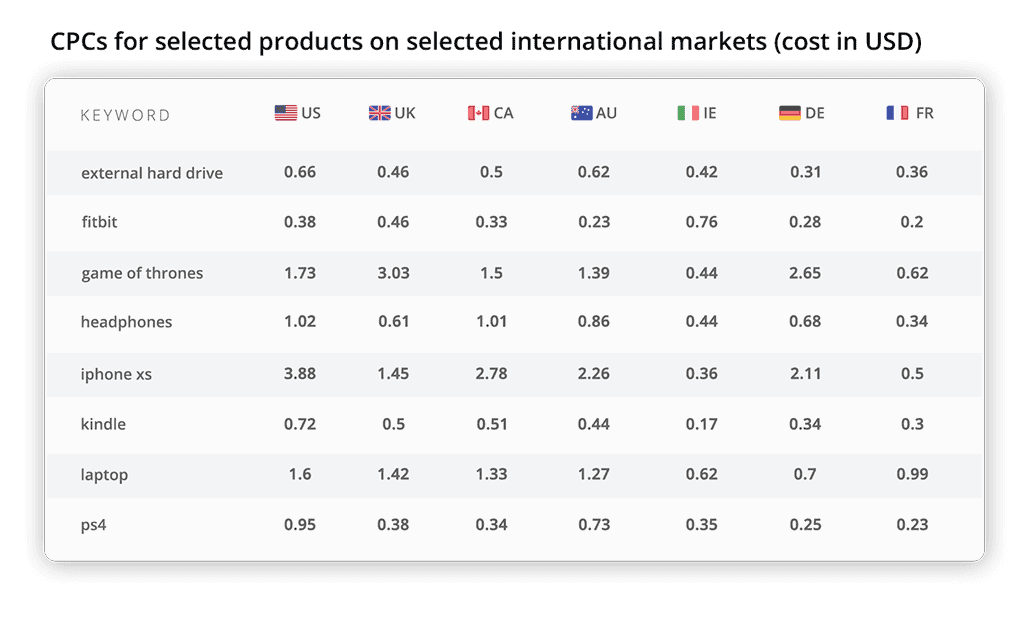
How to use AI seller tools for effective Amazon advertising?
Nowadays, Amazon Advertising is a must for an increasing number of sellers. This is due to the ever-increasing competition on the marketplace.
Ads positively impact product page views, transactions and revenue. In general, they’re very effective for a short boost in sales. However, a successful long-term advertising strategy is a completely different thing.
Unfortunately, many sellers don’t understand how advertising on Amazon really works, and can thus lose both paid and organic traffic.
In this article you’ll learn about:
- Amazon Advertising: the essential information (campaign types, the concept of retail readiness and more) and best practices
- Important metrics for evaluating your Amazon Advertising success
- How to assess ad effectiveness, lower advertising costs and beat competition
- How to use AI-powered automation to achieve the best ROI with your advertising strategy.
Ecommerce advertising on marketplaces like Amazon
In today’s retail market the battle for customer attention is fiercer than ever. The reality is that being first in organic may not mean that much on marketplaces.
As Amazon, eBay and other platforms have increased the prominence of paid ads, the first organic result may not pop up until the middle of the page.
As a result, more and more Amazon sellers need ads.
At the same time, many sellers aren’t familiar with how Amazon Advertising really works. For example, sometimes you must put in more advertising effort, another time products can sell relatively easily with no (excessive) ad spend. It’s important to adjust advertising activities accordingly.
For a well-thought out advertising strategy, you can use ad agencies. The question remains: is it the best return on investment?
The fact is that automated advertising solutions can help you manage your campaigns easily and effectively. Artificial Intelligence and automation can help you save time, spend less money and, above all, sell more on Amazon.
A good understanding of how advertising on specific marketplaces works is essential. Sellers need to advertise the right product and do it well. Otherwise, they’ll spend more money than necessary.
FREE Download: AI seller tools
Amazon Advertising: essential information
Amazon Ads help sellers grow their sales, but they also grow Amazon’s revenue. And Amazon loves it.
Amazon Ads help sellers increase:
- Conversions (sales from ads)
- Organic sales (by helping sellers achieve higher sales velocity)
- SERP (Search Engine Result Page) ranking (the more sellers sell, the higher they are in SERP)
- Brand awareness (by driving traffic to stores).
Amazon PPC campaign types include Sponsored Products, Sponsored Brands and Sponsored Display.
Amazon Advertising: retail readiness
Remember that advertising does not sell your products. It helps you amplify your sales by bringing extra traffic. Thus, your listings should already be well-optimized and bring conversions.
A well-known concept among Amazon advertisers is retail readiness. “Retail-ready” means the seller’s offer (listing + product) is ready to compete against other offers in the niche and it builds trust.
Investing in advertising, no matter how efficiently executed, won’t be worthwhile if products are not retail-ready to drive conversions.
Retail readiness defines the parameters for optimizing listings for conversions, such as:
- Product title: includes the most important keywords, optimized for both the search engine and human customers
- Description & bullet points: includes other keywords; describes benefits and features
- Images & video: the most important marketing tool to show the benefits and features
- Customer reviews & product FAQ’s: social proof that builds trust
- Star rating: 4.0 stars and higher means readiness for ads
- Inventory: products are in stock
- Buy box: necessary to get impressions
- Enhanced brand content: additional content for customers, e.g. A+, Brand Story.
Amazon Advertising: assessing ad effectiveness
Metrics will help you evaluate the effectiveness and profitability of your ads. For example, if you already have 20-30 clicks and no sales, it’s a red flag. Higher CPC means higher competition.
Conversion Rate (CR = orders/clicks*100) and the so-called Advertising Cost of Sales (ACoS = ad spend/ad sales*100) are 2 important metrics that should be tracked by every seller.
Sales are always the end goal, but the question remains: at what cost? What is more important for you: sales or profit?
When prioritizing sales over profit, you need to achieve a break-even ACoS (your return only needs to break even with spend). A lower ACoS means you’re making profit. A higher ACoS means you’re losing money.
In the latter case, make sure to prevent wasted spend: reduce your ACoS, e.g. by cutting off traffic coming from irrelevant or unprofitable keywords.
Don’t rely on your gut feeling, use real data
When you start advertising on Amazon and you don’t have too much data about your clients, start with automated campaigns. You should get some reliable stats and insights after 3-4 weeks. When you know what works (keywords, bids, etc.), use this knowledge to set up the right manual campaigns.
Automated campaigns are good for research. Learn what brings conversions and invest in it.
Moreover, use search term reports to learn whether they’re relevant to your product and get rid of non-performing keywords. If you identify a very effective keyword, make sure it’s present in your product listing.
Optimizing Amazon Ads
When you’ve collected enough data from your campaigns, now is the time for optimization.
Amazon ad optimization includes optimizing bids/CPC, adding negative targets and transferring targets (keywords, ASINs) from auto to manual campaigns and between manual campaigns. Do it periodically for every product campaign. Allow some time between optimizations to get statistics.
As for bid optimization, here are some basic rules:
- Good ACoS Targets: If actual ACoS lower than target ACoS value: raise target bid
- Poor ACoS Targets: If actual ACoS higher than target ACoS value: lower target bid
- Clicked Non-converting Targets: lower bid or pause target
- Low impressions: try increasing the target’s bid
- No impressions: check product listing indexation for the keyword.
Optimization requires ongoing discipline. As already mentioned, you can do everything manually, but be prepared for a significant investment of time and resources. Alternatively, consider an automated advertising tool.
Amazon Advertising: using automated solutions to lower advertising costs
When, over time, paid marketing campaigns reach a plateau in a given market, increasing ad spend/CPCs further to grow traffic can decrease campaign clicks, sales and the overall profitability. What helps to increase profitability are lower CPCs on less competitive markets.
On marketplaces such as Amazon and eBay you can sell on markets with less competition and more sales potential. These are often foreign markets where local online sellers aren’t able to offer specific products or meet the local demand. For example, in Italy many products have to be imported from abroad, e.g. clothes from foreign brands or vehicle parts for cars.
The possibility of satisfying the unmet demand for unique products from overseas is one of the biggest worldwide opportunities for ecommerce retailers.
On international markets, sellers can get the additional visibility to international buyers and the low CPCs on these markets. This can be a huge opportunity for marketplace sellers who want to stand out from their competitors.
Webinterpret’s AI-based ecommerce solution helps sellers leverage ads on different international markets. With access to comprehensive data and vast ecommerce knowledge, we can help sellers tap into their actual sales potential to achieve the best possible ROI.
Don’t wait to use automation to grow your sales right now!

How to use AI-based automation for ecommerce advertising, shipping and product localization?
Related Posts:
Ecommerce Newsletter
By clicking the “Subscribe now” button, you agree to receive our monthly e-mail newsletter and regular marketing and commercial communications by email from Webinterpret regarding marketing trends and our digital marketing services. You confirm that you have read and agreed to Webinterpret’s Terms of Service and Privacy Policy.









![Amazon Advertising: all you need to know [FREE guide] Amazon Advertising: Ecommerce Guide](https://www.webinterpret.com/wp-content/uploads/2020/07/amazon-advertising-ecommerce-guide.png)